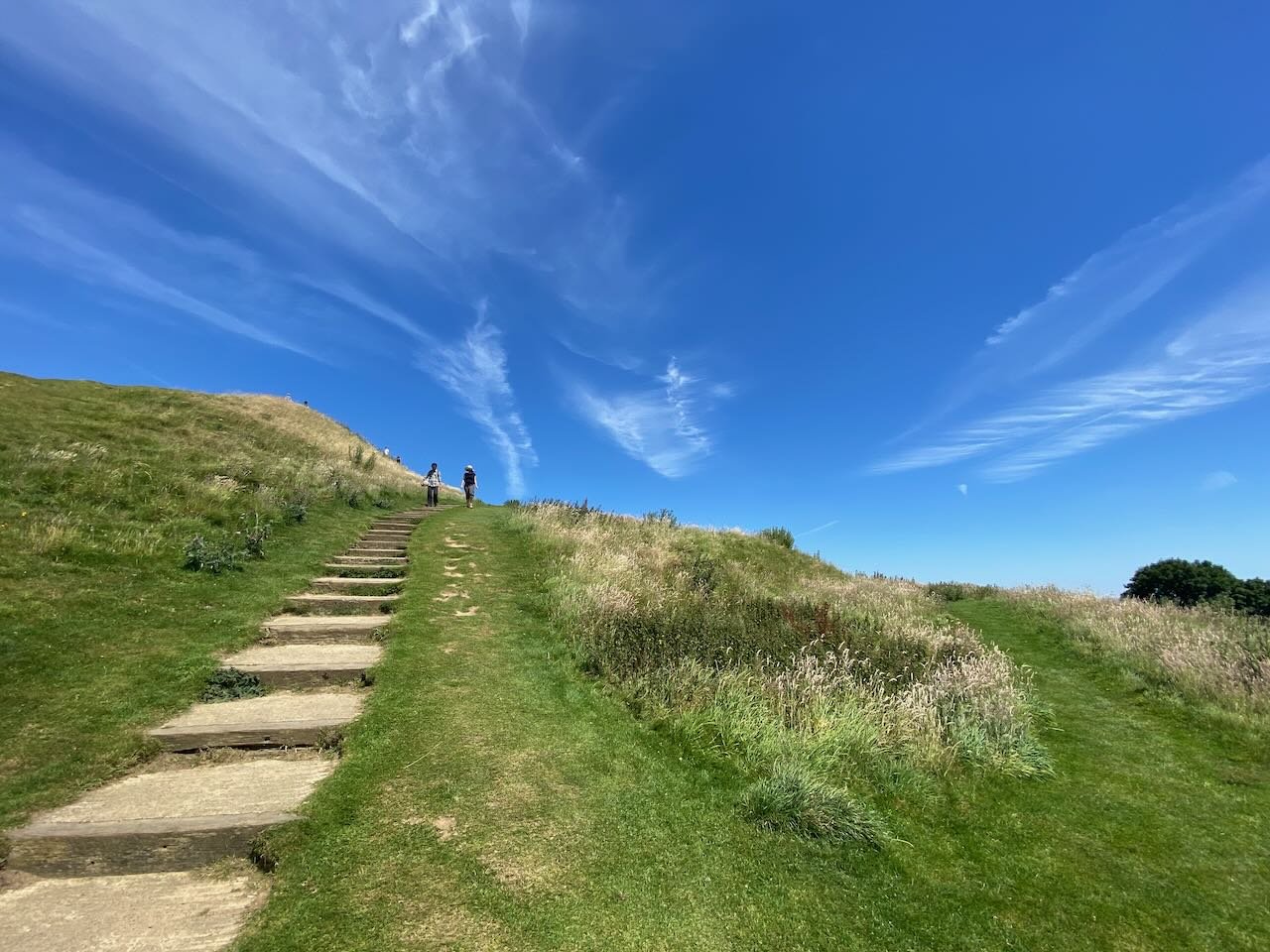
The Noble Eightfold Path
to the End of Dissatisfaction
About this Course
The Noble Eightfold Path is a gorgeous blueprint for spiritual, psychological, and mystical practice, and is designed to lead the one who devotes themself to it to the complete uprooting of the causes of suffering and dissatisfaction in our hearts. Because it overhauls every part of our life, including the sense of who we are and what our existence mean, substantial dedication is necessary to follow it through. But even a dip into its bracing waters can be a balm for the weary heart, and sustenance through the many turns of a life. To follow it wholeheartedly is the basis of every type of Buddhist practice, and doing so has sustained, nourished, and liberated countless beings since the sage Gotama crafted his realization into a path for others to follow.
This course is an archive of talks and meditations on the Eightfold Path originally given at Insight Meditation Satsang May 2019 – Dec 2021. Included are 243 talks & meditations (130 hours of audio), with additional resources for study.
Take this Course
All courses are offered in the Gift Economy model. This course is available on a wide sliding scale, based on self-assessment of your income and ability to offer your resources in a way that supports others with lesser resources to attend. Please support us in using the Gift Economy model by engaging sincerely with the process and selecting the highest level you can on the sliding scale. Your generosity directly gifts scholarship support to those who need it, and allows us to share these teachings with everyone who might benefit from them, regardless of access to wealth. Thank you!
SELECT A TIER TO ENROLL:
Scholarships are offered as widely as possible and based on request. Our goal is to not turn anyone away for lack of resources, both for this course and future offerings. Email us here to request a scholarship.
Learn About Joining the Saṅgha
What’s included
-
1.1 Be Willing to Turn Toward the Truth
1.2 The Four Noble Truths, 1: Pain
1.3 The Four Noble Truths, 2: Craving
1.4 Craving & Clinging as ANS Responses
1.5 The 4 Noble Truths, 3: Cessation
1.6 Cessation, Liberation, Letting Go
1.7 Setting in Motion the Wheel of the Dhamma
1.8 Why Kondañña Shouts “Change!” When He Awakens
1.9 Āsāḷhā Pūjā: Celebrating the Turning of the Wheel
1.10 “The figured wheel rolls through shopping malls and prisons”
-
2.1 Right Intention Starts With Letting Go
2.2 Letting Go: Willful or Autonomic?
2.3 Renunciation as Recovery
2.4 “Freed from Hatred and Ill-will”
2.5 Hatred is a Virus
2.6 Nonviolence, part 1: Intention & Impact
2.7 Nonviolence, part 2: Ethics & Relationships as the Path
2.8 Nonviolence, part 3: Kamma and Rebirth
-
3.1 First, Tell the Truth
3.2 Not Lying: Not Easy!
3.3 Truth Statements
3.4 Speech Acts, Performativity, and Other Ways of Saying Words Have Power
3.5 The Four Speech Disciplines as Spectra
Extra: Reflections After the Kavanaugh Hearing
-
4.1 Non-Harming, part 1: Don’t Be a Hard-Hearted Killer. At Least.
4.2 Non-Harming, part 2: Rabbits are Eco Meat! But…
4.3 Right Action, part 3: Action Becomes Rebirth
4.4 Not Taking That Which Isn’t Offered, part 1
4.5 Not Taking That Which Isn’t Offered, part 2
4.6 Establishing Wise Intentions in Your Practice
4.7 A Meditation on Love
4.8 Sexual Energy in Spiritual Practice
4.9 “Intoxicants that cloud the mind”: The Complex 5th Precept
4.10 Intoxicants, part 2: “But don’t stop taking your meds.”
4.11 Screens and Media as Complex Intoxicants
4.12 Meaning, Perception, Context, Discernment
-
5.1 The Basics of Right Livelihood: Money, Ethics, Interconnectedness
5.2 Right Livelihood Means Both How We Earn and How We Spend
5.3 Economy Means Deep Interconnection
5.4 Dhammic Socialism
-
6.1 Right Effort Basics
6.2 Striving
6.3 Autonomic Nervous System States 1
6.4 Autonomic Nervous System States 2
6.5 Autonomic Nervous System States 3
6.6 Vesak and Colonialism
6.7 Why Can’t I Control My Big Feelings??
6.8 Sustained Effort
6.9 Cultivating Wholesome States
6.10 Effort – Directing Attention
-
DO.1 Dependent Origination, part 1: Decolonizing the Heart
DO.2 Dependent Origination, part 2: Identity and Culture
DO.3 Dependent Origination, part 3: The Classical “3 Poisons/Fires”
DO.4 Dependent Origination, part 4: Reactivity
DO.5 Dependent Origination, part 5: Emergency or Just Saṁsāra?
DO.6 Dependent Origination, part 6: Linear vs. Cyclical Views of Evolution
-
7.1.1 Mindfulness as Liberative Inquiry
7.1.2 The Practice of Buddhist Mindfulness
7.1.3 Mindfulness of the Body: 32 Parts
7.1.4 Elements
7.1.5 Concentration
7.1.6 Mindfulness as Intimacy
7.1.7 Bearing Witness
7.1.8 Tranquility and Compatmentalization
7.1.9 Death
7.2.1 Vedanā Affect
7.2.2 Vedanā and Emotions
7.2.3 Vedanā as Affect, part 2
7.2.4 Vedanā and Emotions, part 2
7.2.5 Vedanā Primary & Secondary Emotions
7.3.1 Mindfulness of States, pt. 1
7.3.2 Mindfulness of States, pt. 2
7.3.3 States: Energy, Charge, Focus
7.3.4 States: Self-Awareness, Assessment, Discernment
7.4.1.1 Hindrances Overview
7.4.1.2 Hindrances and Their Roots
7.4.1.3 Hindrances: I’m Out of Control!!
7.4.1.4 Hindrances and Social Action
7.4.1.5 Hindrances: Between Hedonism and Asceticism
7.4.1.6 Hindrances: Hatred and Social Engagement
7.4.1.7 Hindrances: Motivation & Action
7.4.1.8 Hindrances: Somatic Energy
7.4.1.9 Hindrances: Intervention vs. Acceptance
7.4.1.10 Hindrances: Doubt, Doubt, Doubt!
7.4.1.11 Hindrances: Doubt About What Is and Isn’t The Path
7.4.1.12 Hindrances: Faith in The Triple Gem
7.4.1.13 Hindrances: Doubt, Liberation and Rebirth
7.4.2.1 Factors of Awakening: Appropriate Attention
7.4.2.2 Factors of Awakening: Investigation
7.4.2.3 Factors of Awakening: Conditions for Engagement
7.4.2.4 Factors of Awakening: Energy
7.4.2.5 Factors of Awakening: Rapture
7.4.2.6 Factors of Awakening: Tranquillity
7.4.2.7 Factors of Awakening: Tranquillity Part 2
7.4.2.8 Factors of Awakening: Tranquillity Part 3
7.4.2.9 Factors of Awakening: Tranquillity Part 4
7.4.2.10 Factors of Awakening: Tranquillity Part 5
7.4.2.11 Factors of Awakening: Tranquillity & Immersion
7.4.2.12 Factors of Awakening: Immersion
7.4.2.13 Factors of Awakening: Directed Attention
7.4.2.14 Distraction is Flight From Discomfort
7.4.2.15 Equanimity is Really Difficult
7.4.2.16 Equanimity Means Emotion without Confusion
7.4.2.17 Equanimity in the Long Emergency
7.4.3.1 Fuel Reduction
7.4.3.2 “Go ahead and want!”
7.4.3.3 The Khandha as Process
7.4.4.1 Embodied Mind, Minded Body
7.4.4.2 Mindfulness of the 6 Senses as Eros
7.4.5.1 Equinox, Fractals, Balance, Path
7.4.5.2 Understanding Suffering
7.4.5.3 The Promise of Freedom
-
8.1 Intro to Samādhi
8.2 Quarantine Your Demons
8.3 The Pleasure Garden of the Heart
8.4 Jhāna and Neighborhood
8.5 Four Embodied Absorptions
8.6 Jhāna as Described in the Suttas
8.7 What to Meditate On
8.8 Pleasure, Internal & External
8.9 How to Relate to Thinking
8.10 Solstice! End of the Path
I just wanted to let you know how grateful I am for the Tuesday evening Satsang, and for the guidance and insight you offer so generously there. I’m not a religious person, but I find myself hungry at this age for discourse and wisdom around how to lead a more meaningful, ethical, and full life. The respectful & safe space you hold, along with the thoughtful talks you give means a lot to me and is helping transform my thinking and actions on a daily basis.
— Satsang Participant
Meet your teacher, Dr. Sean Oakes
He/they, queer, Puerto Rican & English ancestry, living on unceded Pomo land in Northern California
Sean teaches Buddhism, Yoga, and somatic practice, focusing on philosophical inquiry, trauma healing, devotion, and social engagement as expressions of the Dharma. He wrote his dissertation on extraordinary states in Buddhist meditation and experimental dance, and teaches at Spirit Rock Meditation Center and elsewhere. Read more about…
